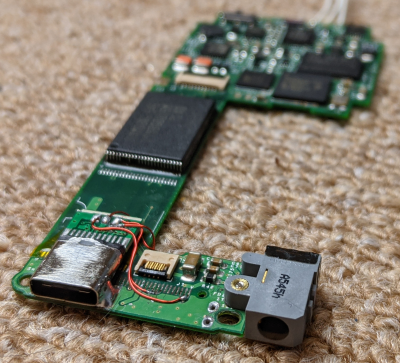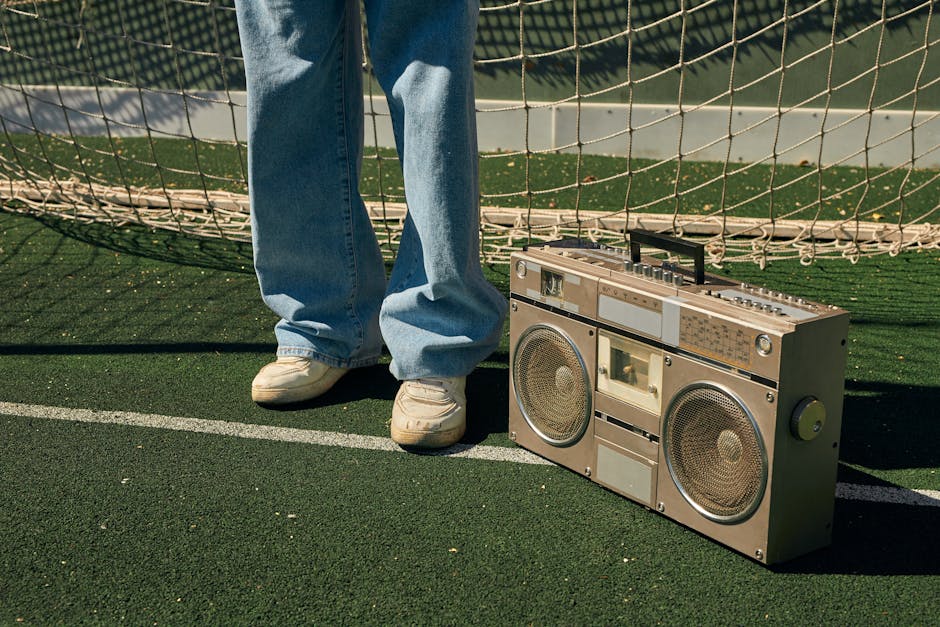In an era dominated by the seamless integration of the Apple ecosystem, where the iPhone is the central hub for everything from communication to entertainment, a surprising trend has emerged from the annals of tech history. The iPod Classic, officially discontinued by Apple in 2014, is experiencing an unexpected and vibrant renaissance. This isn’t just about nostalgia; it’s a full-fledged technological revival driven by a dedicated community of enthusiasts, tinkerers, and audiophiles. They aren’t just preserving these iconic devices; they are re-engineering them for the modern age, creating what many consider the ultimate dedicated music player. This wave of iPod Classic news isn’t coming from Cupertino, but from workshops and forums around the world, where the classic click wheel is being paired with 21st-century technology like USB-C, Bluetooth, and massive solid-state storage. This movement speaks volumes about the desire for focused devices, the right-to-repair ethos, and the timeless appeal of a personally curated music library in the age of streaming.
The Enduring Legacy and the Rise of the Modding Scene
Long before the latest iPhone news detailed advancements in computational photography or the most recent iOS updates news revamped the lock screen, the iPod was the device that redefined Apple and the entire music industry. Its singular focus was its greatest strength. While devices like the iPod Touch, iPod Nano, and even the iPod Shuffle carried the brand forward, the iPod Classic, with its massive storage and iconic interface, remained the purist’s choice. Its discontinuation left a void for those who craved a device dedicated solely to music, free from the notifications and distractions of a smartphone. This void is precisely what the modding community has stepped in to fill.
A Distraction-Free Musical Haven
In today’s hyper-connected world, the constant barrage of notifications from an iPhone or an Apple Watch can fragment our attention. The beauty of the original iPod Classic was its simplicity. There were no apps, no browser, no messages—just you and your music. A modded iPod Classic preserves this sanctuary-like experience. It’s a deliberate choice to disconnect from the noise and engage deeply with albums and playlists. This philosophy stands in stark contrast to the modern Apple ecosystem, where devices like the HomePod and HomePod mini are designed for constant, voice-activated connectivity, and the latest Siri news focuses on deeper integration across all platforms. The iPod offers a respite, a return to a more intentional mode of listening.
The Tangibility of Ownership vs. The Ephemerality of Streaming
The rise of streaming services has given us access to nearly every song ever recorded, but it has also changed our relationship with music. We rent access rather than own copies. A curated iPod library, on the other hand, is a personal collection. It’s a digital record collection that can’t be altered by licensing disputes or removed at a platform’s whim. This concept of digital ownership resonates deeply with music lovers and collectors. It’s a private, tangible asset, a notion that feels increasingly important amidst ongoing discussions around Apple privacy news and data ownership. While the convenience of streaming on an iPhone paired with AirPods Pro is undeniable, the permanence of a local library on a dedicated device holds a powerful, unique appeal.
The Community’s Engineering Response
When Apple ceased official support, the community took over. Forums and marketplaces began to buzz with guides, custom parts, and pre-built modified iPods. The initial focus was on simple repairs—replacing dying batteries and failing hard drives. However, this quickly evolved into a full-blown engineering movement. The core motivation was to solve the iPod Classic’s two main anachronisms: its reliance on the obsolete 30-pin connector and its lack of wireless audio capabilities, a feature now standard across the entire Apple lineup, from iPhones to the upcoming Apple Vision Pro.
Anatomy of a 21st-Century iPod: A Technical Deep Dive
Modernizing a decade-old device is no small feat. It requires a deep understanding of the original hardware and the ingenuity to integrate new components seamlessly. The most popular modifications transform the iPod Classic from a vintage gadget into a high-performance, modern audio player.

From 30-Pin to USB-C: The Connectivity Revolution
One of the most significant upgrades is replacing the proprietary 30-pin dock connector with a universal USB-C port. This is more than a simple convenience; it’s a fundamental modernization.
- The Challenge: The iPod’s logic board was designed exclusively for the 30-pin connector. Modders have developed custom-printed circuit boards (PCBs) that physically fit within the iPod’s chassis and correctly map the USB-C pinout to the iPod’s board for both charging and data transfer.
- The Benefits: The user can now carry a single cable for their MacBook, iPad, and iPod. This aligns the classic device with the latest iPad news and Apple’s broader transition to USB-C. Data transfer speeds for syncing large libraries can also be improved, and it opens the door to potential future integrations, like USB-C audio output. This modification mirrors the broader trends seen in Apple accessories news, where USB-C is becoming the undisputed standard.
Cutting the Cord: Integrating Bluetooth Audio
Perhaps the most sought-after modification is the addition of Bluetooth. This allows the iPod Classic to work with the vast ecosystem of wireless headphones and speakers, a market dominated by Apple’s own products.
- The Implementation: This is a complex hardware addition. It involves soldering a small Bluetooth transmitter module directly onto the iPod’s logic board, tapping into the audio output lines before they reach the headphone jack. A custom firmware patch is often required to allow the user to control Bluetooth pairing from the iPod’s original interface.
- Real-World Application: A Bluetooth-modded iPod Classic can pair seamlessly with AirPods, AirPods Pro, or even AirPods Max. Imagine jogging with a 1TB iPod Classic streaming wirelessly to your AirPods—it’s a scenario that merges the best of old and new. This feature directly addresses the market shift highlighted by constant AirPods news, making the iPod relevant in a wireless world. It can connect to car stereos, portable speakers, and even a HomePod, bridging a significant technological gap.
Beyond the Hard Drive: The Flash Storage Conversion
The original iPod Classic used a miniature, spinning mechanical hard drive (HDD), which was a marvel at the time but is now a major point of failure. The flash storage conversion is the cornerstone of most iPod mods.
- The Technology: Modders use adapters, most famously the iFlash series, that allow the use of SD cards, mSATA SSDs, or M.2 SSDs in place of the original HDD. These adapters plug directly into the iPod’s ZIF connector where the hard drive once sat.
- The Advantages: This upgrade is transformative. It dramatically improves reliability and durability, as there are no moving parts. It significantly increases data access speed, making the interface snappier. Battery life is substantially extended because flash storage consumes far less power than a spinning disk. Most importantly, it allows for colossal storage capacities—it’s now common to see iPod Classics with 1TB or even 2TB of storage, dwarfing the capacity of even the highest-end iPhones.
More Than Nostalgia: The Driving Forces of the iPod Renaissance
The resurgence of the iPod Classic is a fascinating cultural and technological phenomenon. It’s a direct response to several prevailing trends in the consumer electronics landscape, from corporate repair policies to the very nature of media consumption.
The Right-to-Repair Movement in Action
The iPod modding community is a poster child for the right-to-repair movement. These are users who have refused to let a perfectly good device become e-waste simply because its manufacturer has moved on. By creating parts, sharing knowledge, and extending the product’s lifecycle, they are making a powerful statement about sustainability and consumer empowerment. This grassroots effort stands in contrast to the often-closed nature of modern devices, where simple repairs can be difficult or impossible. This ethos will become even more critical as we see complex devices like the Apple Vision Pro and its associated Vision Pro accessories enter the market.
A Counter-Narrative to the Streaming Monopoly

While streaming is convenient, it has its drawbacks. Sound quality can be compressed, favorite albums can vanish overnight due to licensing issues, and it requires a constant internet connection. A modded iPod, often loaded with high-resolution FLAC or ALAC files, offers a superior, more stable, and more private listening experience. Your listening habits aren’t being tracked by a corporation, a point that resonates with those who follow iOS security news and value digital privacy. It represents a conscious decoupling from the algorithmic recommendations that define the streaming experience, putting the user back in complete control of their media diet.
The Future of Niche Devices in a Converged World
The success of the modded iPod Classic raises an interesting question: Is there a future for dedicated, single-purpose devices in a world dominated by the all-in-one smartphone? The answer appears to be yes, for a passionate niche. We see this with dedicated e-readers, high-end digital cameras, and handheld gaming consoles. These devices offer a superior, more focused experience for a specific task. As technology becomes more immersive, with developments in Apple AR news and products like the Vision Pro, the mental fatigue of a single, all-encompassing interface may lead more people to seek out simpler, dedicated tools for specific activities, whether it’s reading a book, taking a photo, or just listening to music.
Should You Build a Modern iPod Classic? A Practical Guide
Embarking on an iPod modification project can be a rewarding experience, but it’s not for everyone. It’s essential to weigh the benefits against the potential challenges before diving in.
The Pros: Unmatched Portability, Capacity, and Control

The primary advantage is creating a device tailored perfectly to your needs. You get a pocket-sized music library that can hold tens of thousands of high-fidelity songs. The battery life of a flash-modded iPod can be measured in days, not hours. With Bluetooth and USB-C, it integrates with your modern accessories without sacrificing its core, distraction-free identity. It’s a unique blend of vintage aesthetics and modern functionality that no current product on the market can replicate.
The Cons: The DIY Challenge, Cost, and Ecosystem Disconnect
This is a hands-on project. Modifying an iPod requires patience, a steady hand, and the right tools. There’s a real risk of damaging delicate components. The costs can also add up quickly; a high-capacity SD card, a new battery, an iFlash adapter, and the custom USB-C and Bluetooth modules can easily exceed the price of a used iPod Touch. Furthermore, a modded iPod exists outside the modern Apple ecosystem. It won’t sync with Apple Music or iCloud Music Library. Managing your library requires a return to the old-school method of syncing with a computer via iTunes or a modern equivalent.
Who Is This For?
A modded iPod Classic is the perfect device for:
- The Audiophile: Who wants to carry their entire collection of lossless audio files without compromise.
- The Tinkerer: Who enjoys the process of building, modifying, and understanding the technology they use.
- The Digital Minimalist: Who wants to intentionally separate their music from the endless distractions of their smartphone.
- The Collector: Who appreciates the iconic design and wants to preserve and enhance a piece of tech history.
The Enduring Beat of a Classic
The ongoing story of the iPod Classic is a powerful testament to the longevity of great design and the passion of a dedicated community. This iPod revival news demonstrates that even in a fast-paced tech landscape that constantly pushes the “next big thing,” there is a deep and abiding appreciation for well-crafted, focused tools. The modding scene has transformed the iPod from a relic into a statement piece—a symbol of ownership, repairability, and the pure, unadulterated joy of music. While Apple continues to innovate with products spanning from the Apple Watch to the Vision Pro, the humble iPod Classic, kept alive by its fans, proves that some beats are truly timeless. It’s a reminder that sometimes, the best way forward is to thoughtfully upgrade the best of the past.











